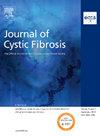美国囊性纤维化肺移植受者的elexaftor /tezacaftor/ivacaftor处方
IF 6
2区 医学
Q1 RESPIRATORY SYSTEM
引用次数: 0
摘要
背景:elexaftor /tezacaftor/ivacaftor (ETI)可显著改善囊性纤维化(CF)的肺和肺外表现。ETI临床试验排除了肺移植(LTx)受者,目前的移植后处方实践没有证据。我们试图确定美国CF LTx受者中新的ETI处方的流行程度以及LTx后与ETI处方相关的因素。方法:我们通过囊性纤维化基金会患者登记处对LTx受体进行了一项回顾性横断面研究,直至2022年12月。截至2019年10月,接受者还活着,具有符合ETI条件的基因型,并且在LTx之前没有开过ETI处方。采用Logistic回归评估与ETI处方相关的因素。CF中心的处方模式是根据每个中心LTx后使用ETI的LTx受者的比例进行分类的。结果:总体而言,488/1666(29.3%)的患者在LTx后服用了ETI。鼻窦疾病的存在(OR 2.12, 95% CI 1.51-2.99)和BMI2 (OR 1.52, 95% CI 1.13-2.04)与LTx后ETI处方呈正相关。CF中心处方模式[“中间处方”:OR 0.19, 95% CI 0.14-0.26;“低处方”:OR 0.02, 95% CI 0.01-0.04;“高处方”:参照组]和零F508del等位基因(OR 0.18, 95% CI 0.07-0.49;1或2个等位基因:参照组)LTx后与ETI处方负相关。结论:在美国,近30%的符合条件的LTx接受者新开了ETI处方,即使在模型中包括患者临床特征,CF中心处方模式也是LTx后ETI处方的最强因素之一。本文章由计算机程序翻译,如有差异,请以英文原文为准。
Elexacaftor/tezacaftor/ivacaftor prescription in lung transplant recipients with cystic fibrosis in the US
Background
Elexacaftor/tezacaftor/ivacaftor (ETI) has dramatically improved pulmonary and extrapulmonary manifestations of cystic fibrosis (CF). ETI clinical trials excluded lung transplant (LTx) recipients and current post-transplant prescribing practices are not evidence-based. We sought to identify the prevalence of new ETI prescriptions among CF LTx recipients in the United States (U.S.) and factors associated with ETI prescription after LTx.
Methods
We performed a retrospective cross-sectional study of LTx recipients through December 2022 using the Cystic Fibrosis Foundation Patient Registry. Recipients were alive as of October 2019, had an ETI-eligible genotype, and were not prescribed ETI before LTx. Logistic regression was used to assess factors associated with ETI prescription. CF Center prescribing patterns were categorized based on the proportion of LTx recipients who were prescribed ETI after LTx at each center.
Results
Overall, 488/1666 (29.3 %) of patients were prescribed ETI after LTx. The presence of sinus disease (OR 2.12, 95 % CI 1.51–2.99) and BMI<18.5 kg/m2 (OR 1.52, 95 % CI 1.13–2.04) were positively associated with ETI prescription after LTx. CF center prescribing pattern [“middle prescribing”: OR 0.19, 95 % CI 0.14–0.26; “low prescribing”: OR 0.02, 95 % CI 0.01–0.04; “high prescribing”: reference group] and zero F508del alleles (OR 0.18, 95 % CI 0.07–0.49; 1 or 2 alleles: reference group) were negatively associated with ETI prescription after LTx.
Conclusions
ETI was newly prescribed to almost 30 % of eligible LTx recipients in the U.S. Even when including patient clinical characteristics in the model, CF center prescribing pattern was one of the strongest factors associated with ETI prescription after LTx.
求助全文
通过发布文献求助,成功后即可免费获取论文全文。
去求助
来源期刊

Journal of Cystic Fibrosis
医学-呼吸系统
CiteScore
10.10
自引率
13.50%
发文量
1361
审稿时长
50 days
期刊介绍:
The Journal of Cystic Fibrosis is the official journal of the European Cystic Fibrosis Society. The journal is devoted to promoting the research and treatment of cystic fibrosis. To this end the journal publishes original scientific articles, editorials, case reports, short communications and other information relevant to cystic fibrosis. The journal also publishes news and articles concerning the activities and policies of the ECFS as well as those of other societies related the ECFS.
 求助内容:
求助内容: 应助结果提醒方式:
应助结果提醒方式:


